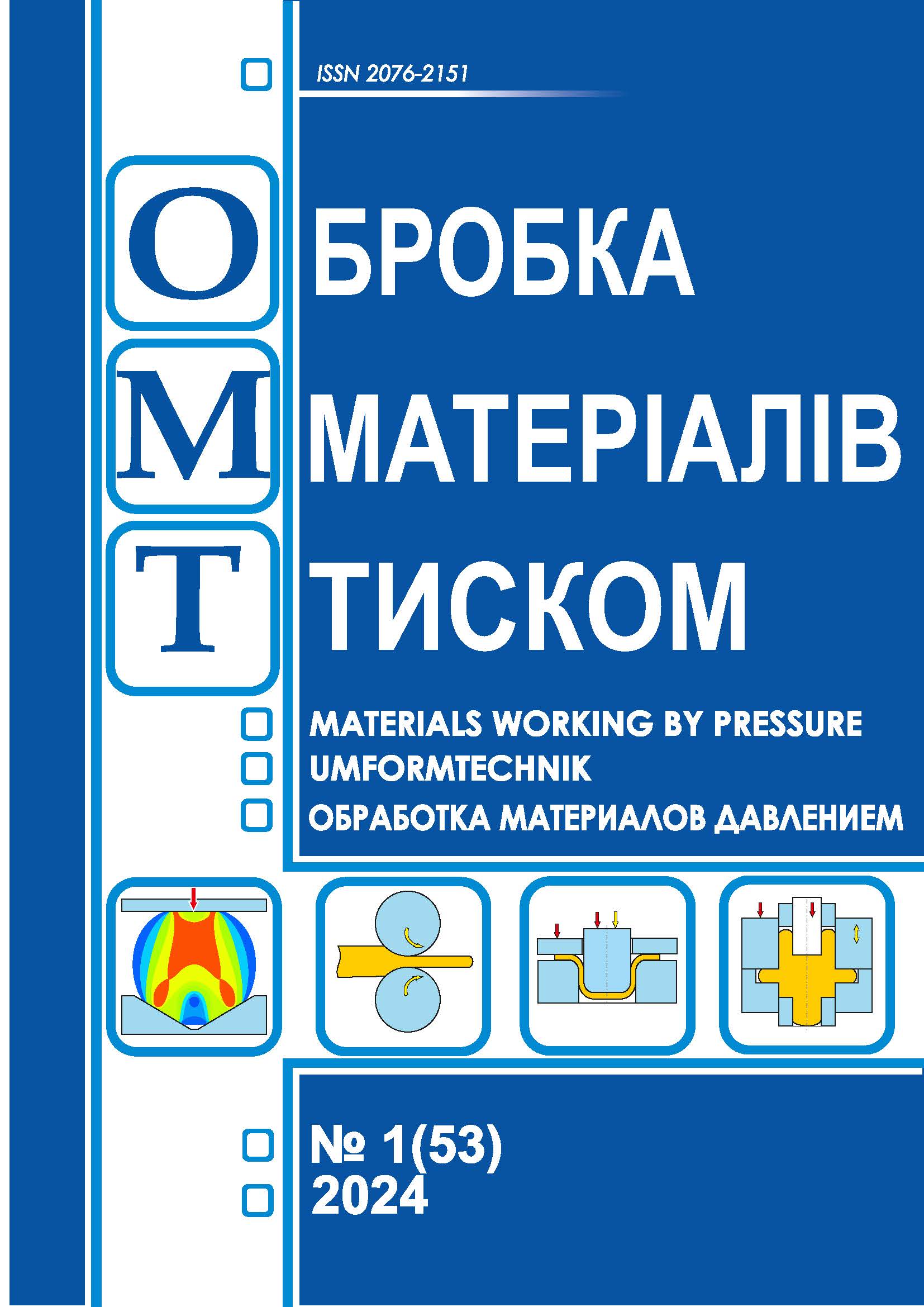Linear and non-linear models in damage summation theory
DOI:
https://doi.org/10.37142/2076-2151/2024-1(53)100Keywords:
Keywords: damage summation theory, deformability theory, ultimate plastic deformation, stress state index, two-stage deformation process, scalar and tensor models, plasticity resource.Abstract
Mykhalevych V., Dobraniuk Yu., Тiutiunnyk O., Kolisnyk M.
Linear and non-linear models in damage summation theory
In the article, against the background of a brief and fragmentary review of the development of the theory of deformability in the works of domestic scientists, the concepts of linear and nonlinear principles of damage summation in their connection with the corresponding scalar and tensor models are considered. The criterion relations resulting from these models are studied for the description of the ultimate plastic deformations in the processes of steady and unsteady deformation.
On the example of a two-stage process, which in each stage is a stationary process, i.e. characterized by a constant value of the stress state index, the regularities of changes of the ultimate deformations in relative coordinates are demonstrated, which reflect the dependence of the residual on the plasticity resource used. The advantages of presenting the criterion relations in these coordinates are substantiated, which consist in universality of comparisons and better reflection of changes, trends, and convenient consideration of data scales. The fundamental qualitative and quantitative difference between the criterion relations derived from models based on linear and nonlinear principles of damage aggregation in relation to the two-stage deformation process is demonstrated. In particular, it was found that when using the plasticity resource of 0.5 in the first stage, the estimated residual life according to the nonlinear criterion relation is 0.84 for the tensile-torsion process and 0.06 for the torsion-tension process, while according to the linear criterion, the residual life is 0.5 in both cases.
The analysis of the model of V.A. Ogorodnikov shows its advantages and disadvantages, which have not been sufficiently considered in the literature. It is shown for which classes of transient deformations the specified model, which reflects the nonlinear principle of damage summation, becomes identical with the simplest linear model. Thus, the recommendations concerning the limits of application of various damage summation models are clarified.
References
Grushko O. V., Ogorodnikov V. A., Slobodianiuk Yu. O. Deformation of Low-Carbon Wire in the Process of its Multistage Cold Drawing. Bulletin of the Vinnytsia Polytechnic Institute. 2019. 3, pp. 103-110. https://doi.org/10.31649/1997-9266-2019-144-3-103-110 (in Ukrainian).
Mikhalevich V. M. Tensor models of damage accumulation. Vinnytsia: "UNIVERSUM – Vinnytsia". 1998. 195 p. (in Ukrainian).
Mykhalevych V. M., Dobraniuk Yu. V., Тiutiunnyk O. I. Damage accumulation models in isotropic materials during cold two-stage: monograph. Vinnytsia: VNTU. 2024. 121 p. ISBN 978-617-8163-11-2. (in Ukrainian).
Sivak R.I., Ogorodnikov V.A., Arkhipova T.F.Non-monotonic plastic deformation in the processes of processing metals by pressure. Vinnytsia: VNAU. 2022. 202 p. ISBN 978-617-7230-46-7. (in Ukrainian).
Matviychuk V., Mikhalevich V., Shtuts A. Аnalysis of stress-strain state (sss) of billet material in the course of setting by resource-saving method of roll stamping. Vibrations in engineering and technology. 2023. 1 (108), pp. 63–72. https://doi.org/10.37128/2306-8744-2023-1-7.
Hooputra H, Gese H, Dell H, Werner H. A comprehensive failure model for crashworthiness simulation of aluminum extrusions. International Journal of Crashworthiness. 2004. 9(5), pp. 449–664. http://dx.doi.org/10.1533/ijcr.2004.0289.
Bai Y., Wierzbicki T. Application of extended Mohr–Coulomb criterion to ductile fracture. Int J Fract. 2010. 161, pp. 1–20. https://doi.org/10.1007/s10704-009-9422-8
Cao T.S. Models for ductile damage and fracture prediction in cold bulk metal forming processes: a review. Int. J. Mater. Form. 2017. 10, pp. 139–171. https://doi.org/10.1007/s12289-015-1262-7
Park S.J., Cerik B.C., Choung J. Comparative study on ductile fracture prediction of high-tensile strength marine structural steels. Ships and Offshore Structures. 2020 15(sup1), pp. 208–219. https://doi.org/10.1080/17445302.2020.1743552
Hrushko O.V., Gutsalyuk O.V., Andreev I.V., Melnychenko V.V., Studenets S.F. Mechanical characteristics of alloys of the W–Ni–Fe system. Physicochemical Mechanics of Materials. 2018. 54, 1, pp. 88–94. (in Ukrainian).
Mikhalevich V.M., Dobranyuk Yu.V. Modeling of the stress-strain and limit states of the surface of cylindrical samples under end compression: monograph. Vinnytsia: VNTU. 2013. 180 p. ISBN 978-966-641-532-8.
(in Ukrainian).
Matviychuk V. A., Kolisnyk M. A., Shtuts A. A. Construction of curved limit deformations of materials. Vibrations in engineering and technology. 2022. № 2 (105), pp. 84-90. https://doi.org/10.37128/2306-8744-2022-2-9. (in Ukrainian).

